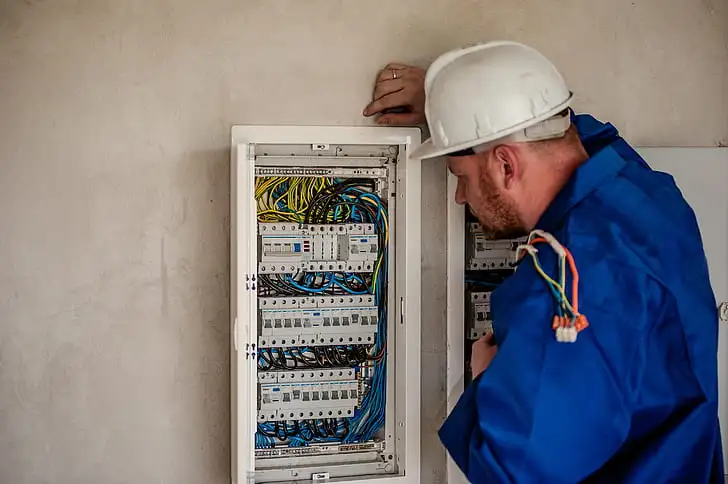
The term “Free Boiler Scheme” describes many UK government-backed, sponsored programs that give free boilers to qualified families. Increasing energy costs and living expenses have many looking for ways to reduce their heating expenses without sacrificing comfort. Recent years have seen the popularity gain of the Scheme as an idea.
It is a government-backed effort to lower low-income households’ energy expenses by replacing outdated, inefficient boilers with new, energy-efficient verities. By switching to more energy-efficient boilers, households may lower their carbon emissions and combat climate change.
This aligns with the UK management’s overall environmental goals. They are often less efficient, using more energy to heat a home. This not only boosts energy expenses but also leads to higher energy consumption, which is useless to the environment.
Many low-income households struggle to pay their energy costs, which is sometimes referred to as fuel poverty. It alleviates this burden by offering free access to more efficient heating systems, ensuring that even the most needy person keeps warm throughout winter.
Eligibility Criteria Free Boiler Scheme
Household income is one of the factors that can determine eligibility for the evaporator plan.
The strategy is geared toward low-income households. To be eligible, persons in the household must receive certain sorts of assistance. Benefits include Income Support, Child Tax Credit, Working Tax Credit, Universal Credit, etc. The specific qualifying circumstances may change according to the program provider, thus it is necessary to clarify the details with the source.
The existing must be old and inefficient. This often signifies that the boiler is at least 7 to 10 years old and has a thermal efficiency grade of C or lower. It is still in good condition and melting efficiently, it may be ineligible for replacement under the plan. Both private renters and homeowners are welcome to participate in the project.
However, when it comes to fixing their boiler, private renters usually ask the landlord for permission. Applying for and receiving a new boiler under the initiative is a straightforward process: First, you have to find out if you qualify for the plan. This often demands completing an online form or speaking with a plan provider, who will place your eligibility based on your income, and benefits.
If you fulfill the basic eligibility requirements, the next step will be a house survey. A qualified technician will come to your home to inspect the current boiler grants and heating system. They will decide whether your boiler is suitable for replacement and whether additional work is necessary to install the kettle.
If your application is approved and the survey finds the need for a furnace, installation will be scheduled. An expert technician will remove the old boilers and replace it with a more energy-efficient model.
Benefits of Energy-Efficient Boiler
There are other benefits to using a kettle under the Scheme than financial savings. The temperature in your house will be more consistent and comfortable thanks to the increased heating efficiency of modern boilers. This is particularly important in the winter when heating must be provided continuously.

Lower Energy Bills
A more efficient one should significantly decrease your energy expenses. This can free up money for other critical requirements, which is extremely beneficial for homes with several members.
Increased Property Value
It is energy-efficient and may boost the value of your property. Potential buyers are generally prepared to pay extra for homes with efficient heating systems because they expect to save money on energy.
Environmental Impact
Lowering your energy use shortens your carbon footprint. This is an excellent first step in living a more sustainable lifestyle and contributing to global efforts to combat climate change. The plan is initially observed on low-cost households, so not everyone will be eligible. Additionally, funding availability varies, and some regions have limited access to this initiative.
Quality of Installation Free Boiler Scheme
As with any home improvement project, the installation must be done correctly. To avoid any complications with the furnace, check that the installation is certified and skilled. Although modern boilers are more dependable, they still require regular maintenance to work completely. Homeowners should be sensible about their maintenance needs and adhere to the important timetable.
Initial Assessment
Finding out whether you are eligible for the program is the first step. This usually entails filling out an online form or speaking with the plan provider. They will determine your eligibility based on your income, benefits, and the condition of your current equipment.
Home Survey
If you fulfill the basic qualifying requirements, the following step will be a house survey. A certified engineer will inspect your home to determine the existence of heat and heating systems. They will determine whether you qualify for replacement and if any additional work is required to install the new boilers.
Installation
When your application is granted and the survey verifies the necessity for one, the installation will be arranged. A competent expert will remove the old boilers and replace them with a more energy-efficient model. The installation procedure is usually brief, lasting less than a day.
Post-Installation Support:
Following the installation, you may be given guidance on when to check for a kettle and any maintenance required to keep it working well.
Conclusion
The Free Boiler Scheme is an outstanding program that provides major benefits to qualified homes, such as cheaper heating expenses and reduced carbon emissions. Modern, energy-efficient boilers, when replaced with old and inefficient ones, help the UK improve home comfort, reduce fuel poverty, and achieve its environmental targets.
You need to look at your options while you’re still deciding if you’re eligible for the program. Not only will you save your energy expenses, but you’ll also be making a positive impact on the environment going forward.
